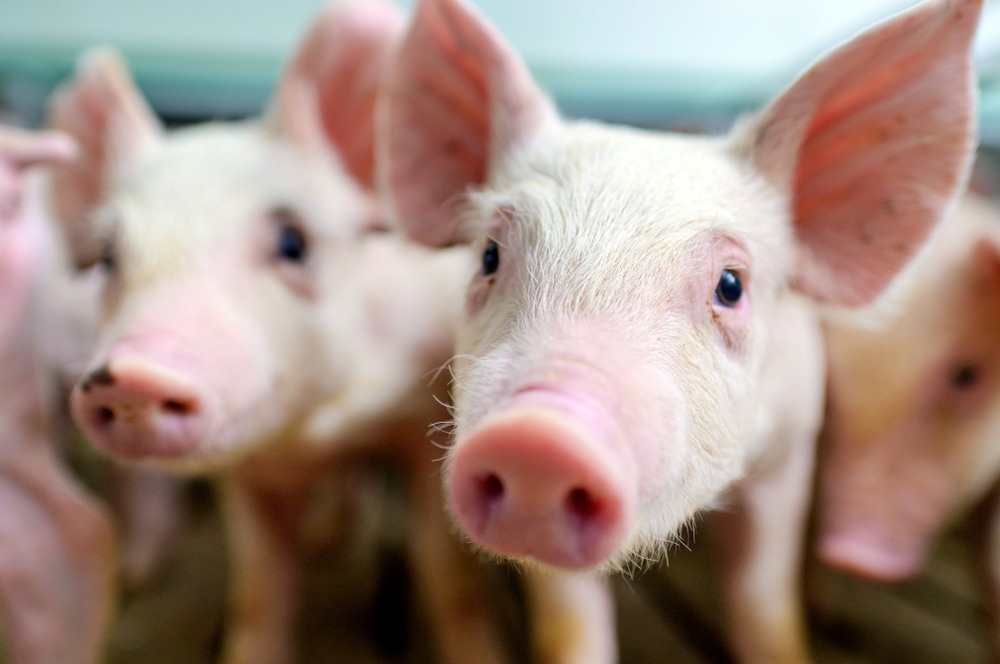In a recent study posted to Preprints with The Lancet*, researchers discuss the results of an active surveillance analysis for the swine influenza virus (SIV) across 30 pig farms in the Liaoning province of China.
 Study: Emergence of Novel Reassortant H1N2 Swine Influenza Virus. Image Credit: Mark Agnor / Shutterstock.com
Study: Emergence of Novel Reassortant H1N2 Swine Influenza Virus. Image Credit: Mark Agnor / Shutterstock.com

 *Important notice: Preprints with The Lancet publishes preliminary scientific reports that are not peer-reviewed and, therefore, should not be regarded as conclusive, guide clinical practice/health-related behavior, or treated as established information.
*Important notice: Preprints with The Lancet publishes preliminary scientific reports that are not peer-reviewed and, therefore, should not be regarded as conclusive, guide clinical practice/health-related behavior, or treated as established information.
Background
Swine is essentially involved in the influenza virus evolution, with prevalent swine influenza virus subtypes including H1N1, H1N2, and H3N2. H1N1 swine influenza viruses include the classical swine (CS)-type H1N1, Eurasian avian (EA)-type H1N1, and 2009 pandemic H1N1, which is often referred to as 2009/H1N1.
During the human pandemic influenza virus outbreak in 1918, the CS H1N1 strain was found to infect and evolve among pigs for over 70 years until 1979, which is when the EA H1N1 strain emerged and gradually replaced the CS H1N1 strain in Asia and Europe.
The 2009/H1N1 strain was isolated from Canadian pigs in May of 2009, after which the strain spread swiftly across the globe. During its circulation, the 2009/H1N1 strain underwent continual reassortant with local strains of swine influenza viruses, which expanded the genomic diversity of swine influenza viruses.
Cells of the swine upper respiratory epithelium secrete α-2,3-linked sialic acid avian-like receptors and α-2,6-linked sialic acid human-like receptors. As a result, influenza viruses that are avian and mammalian in their origin can successfully infect swine, thus allowing these animals to act as ‘mixing vessels’ for different influenza viruses.
About the review
Phylogenetic analysis was performed to assess genetic associations of the hemagglutinin (HA) gene and swine-isolated H1 influenza virus genotypes using the constructed maximum likelihood tree of swine and human pandemic H1 segments. Bayesian time-measured phylogenetic tree of SIV HA genes and H1N2 swine influenza virus genotypes were assessed.
Influenza A virus (IAV) was sequenced and strains of swine influenza viruses were assessed using reference sequences of the influenza research database (IRD) and the global initiative on sharing all influenza data (GISAID) database. Branch lengths representing antigenic distances, as well as phylogenetic host-swine, host-human, and isolation date rings, were assessed.
To further explore the genomic constitution of the H1N2 swine influenza viruses, all swine sequences were downloaded and divided into 12 genotypes ranging from G1 to G12. Molecular marker analysis was performed and the origination of HA genes was determined.
Results
The maximum likelihood tree of human and swine pandemic H1 segments comprised 361 and 2,427 viruses of swine and human origin, respectively. Three H1N2 swine influenza virus strains including the A/swine/Liaoning/3330/2020, A/swine/Liaoning/3327/2020, and A/swine/Liaoning/3328/2020 were identified. The three viral isolates were new triple reassortants belonging to the G12 genotype.
The polymerase, matrix (M), and nucleoprotein (NP) genes, as well as the swine 2009/H1N1 strains, were grouped, whereas the neuraminidase (NA) genes and human H3N2 strains were grouped, and the non-structural (NS) genes and TR H1N2 strains were grouped.
The three H1N2 swine influenza viruses detected in the Liaoning province gained their HA genes from the human 2009 pandemic H1N1 viruses circulating in 2019 that were transmitted to pigs from humans.
Molecular markers in the HA gene that enhance virulence and receptor-binding ability, as well as cause antigenic drifts, included HA-158E, HA-190D, and HA-200A, each of which was identified in the 2019/H1N2 swine influenza viruses. The I117V genetic mutation in the NA gene led to a mild decrease in sensitivity to oseltamivir.
In addition, molecular markers contributing to mammal host adaptabilities, including PA 195R, M1 215A, and NS1 42S, were detected in the human 2009 pandemic H1N2 strains. All three 2009/H1N2 swine influenza viruses comprised the PSIQSR/GLF motif at the HA cleavage region, which is characteristic of avian-influenza viruses of low pathogenicity.
Conclusions
Overall, the study findings showed that the swine ‘mixing vessel’ characteristic led to the switching of genetic components between human seasonal strains and swine influenza epidemic strains during swine coinfections. This generated new reassortants with enhanced adaptability to humans and pandemic potentials, as demonstrated during the emergence of 2009/H1N1. Thus, further research must be conducted to assess swine influenza virus surveillance.

 *Important notice: Preprints with The Lancet publishes preliminary scientific reports that are not peer-reviewed and, therefore, should not be regarded as conclusive, guide clinical practice/health-related behavior, or treated as established information.
*Important notice: Preprints with The Lancet publishes preliminary scientific reports that are not peer-reviewed and, therefore, should not be regarded as conclusive, guide clinical practice/health-related behavior, or treated as established information.